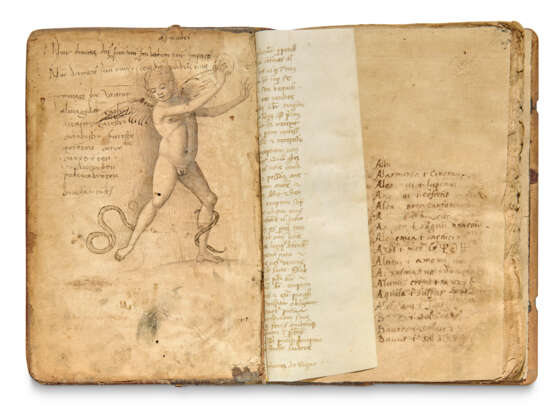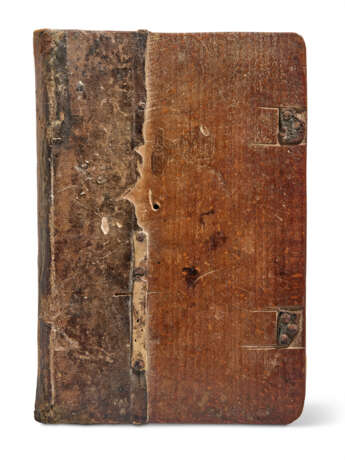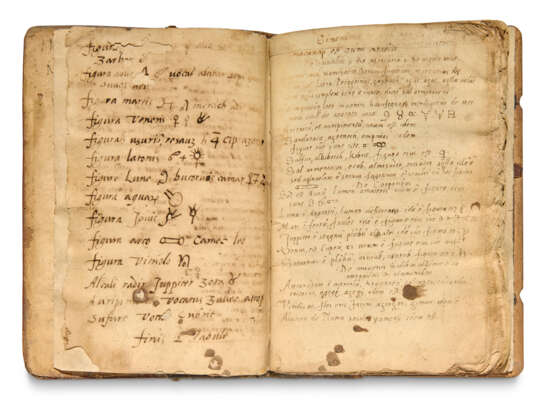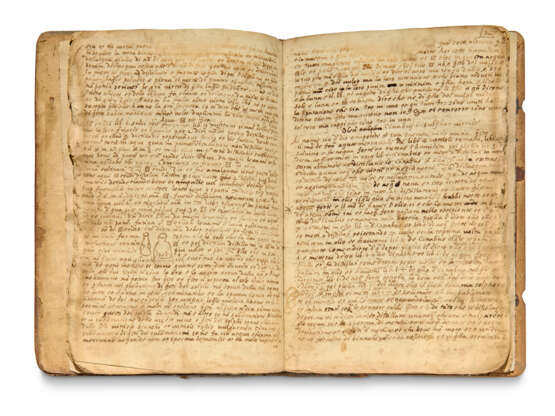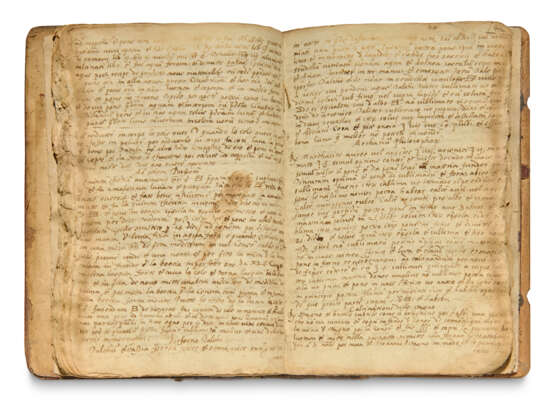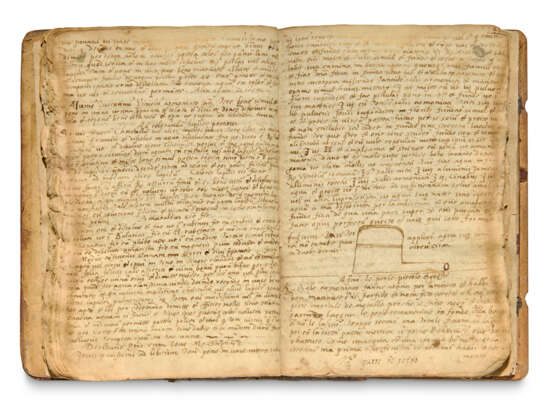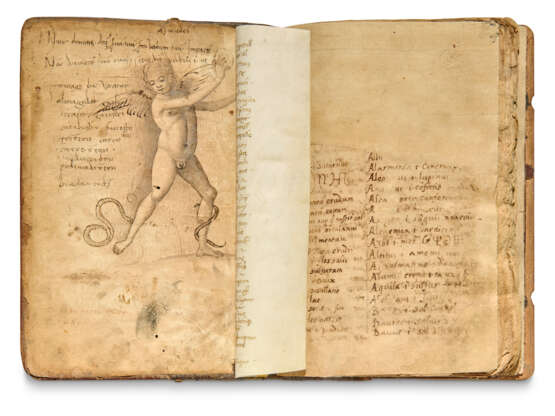ID 1450409
Lot 24 | An alchemical miscellany
Estimate value
£ 8 000 – 12 000
Alchemical miscellany, in Italian and Latin, illustrated manuscript on paper [northern Italy, late 15th-16th century]
A practical alchemical handbook, updated and augmented throughout the 16th century, in a contemporary binding with an accomplished drawing of a putto.
c.212 x 145mm. 76 leaves, bound as a single gathering, sporadic and erratic early foliation, varying number of lines in several 16th-century hands, various maniculae throughout, drawings of alchemical apparatus on ff.24v and 42, an accomplished drawing of a naked boy, with wings and snakes wrapped around his feet, added in pen inside the upper cover, the gathering strengthened with binding fragments from a 15th-century Italian notarial document (a few holes to opening leaf, soiling and dampstaining throughout, tear to f.17, edges of paper frayed and matted). Contemporary half calf over wooden boards (a little scuffed and worn, a few wormholes, lacking clasps and catches).
Provenance:
(1) 'Questo libro e de Ca [...]co de se[...]a A[...] 1480': ownership inscription on inside upper cover. Other 15th-century inscriptions appear on the inside upper cover, along with a fine drawing of a putto with snakes wrapped around his feet (the snakes and the wings appear to have been added at a later date). The manuscript was evidently begun in the late 15th century, but recipes and alchemical treatises and methods continue to be added throughout the 16th century.
Content: An alchemical miscellany, beginning with an alphabetical index and including processes for liquefying metals and converting iron into 'Crocus Martis' (f.7), calcination, purification and freezing of various elements (e.g. mercury, f.14v), various recipes for oil of antimony, salt of urine, etc., including one by Mastro Piero Venetiano (f.30v), methods for colouring precious stones (f.41v) and producing small and large pearls (f.42), 'Tinctura Reale et bona' (f.46v), 'Opera del vitriolo romano' (f.62v-63v), 'l'Aceto di filosophi' (ff.63v-64), a process for softening gold and silver 'Ad indulcir oro et argento duro' (f.71v)
| Place of origin: | Italy, Europe |
|---|---|
| Auction house category: | Medieval & renaissance manuscripts, Books and manuscripts |
| Place of origin: | Italy, Europe |
|---|---|
| Auction house category: | Medieval & renaissance manuscripts, Books and manuscripts |
| Address of auction |
CHRISTIE'S 8 King Street, St. James's SW1Y 6QT London United Kingdom | |
|---|---|---|
| Preview |
| |
| Phone | +44 (0)20 7839 9060 | |
| Buyer Premium | see on Website | |
| Conditions of purchase | Conditions of purchase |
